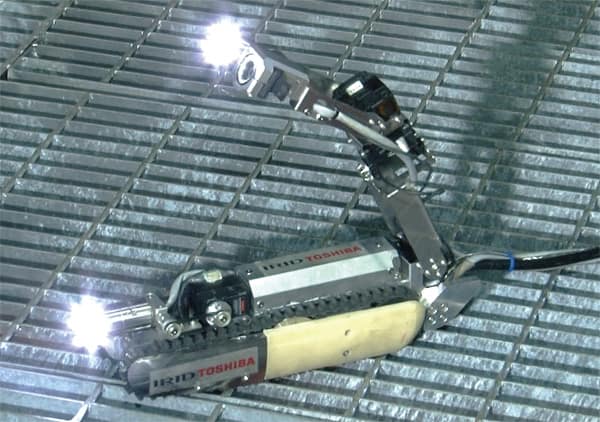Developed in conjunction with the International Research Institute for Nuclear Decommissioning (IRID) the robot - which is approximately 54 cm long and 9 cm wide – will be used to investigate the interior of the primary containment vessel (PCV) of Unit 2 of the plant. This part of the plant was damage by a hydrogen explosion during the initial crisis and is thought to have suffered significant damage.

The robot will be used to determine the location and positioning of fallen objects and fuel debris, if any, and conditions along access routes to the PCV base. This must be done prior to a full investigation around the PCV base.
https://www.youtube.com/watch?v=infVQiVgW1k” frameborder=
Equipped with two cameras, LED lights, a radiation dosimeter and a thermometer, and remotely operated by a wired cable, the robot will enter the PCV along a pipe approximately 10cm in diameter.
LED lights and CCD cameras are attached to both the front and rear of the robot. Once the robot reaches a point near the centre of the PCV, the operator will raise the rear section, like the tail of a scorpion and video the interior of the PCV: the robot will illuminate its surroundings with the LED lights, and swivel its rear to capture a wide area of the PCV, even in darkness or fumes. According to Toshiba the robot is designed to be self-righting, so rollovers are not a concern.
Training of robot operators will begin in July, with the aim of deployment on site by the end of August.
Overview of the Robot
- Weight: Approx. 5kg
- External dimensions: Approx. 54cm (L) ´ 9cm (W) ´ 9cm (H)
- Power supply: Wire-supplied
- Specs: Two CCD cameras, LED lights (12 embedded LEDs per camera + one separate LED), one radiation dosimeter, one thermometer
- Radiation hardness: Approx. 1000 Sv (target) or higher (Design target:100 Sv/h ´ 10 hours)
- Drive time: Designed to operate approximately for 10 hours in an environment with a dose rate of 100 Sv/h




Glasgow trial explores AR cues for autonomous road safety
They've ploughed into a few vulnerable road users in the past. Making that less likely will make it spectacularly easy to stop the traffic for...